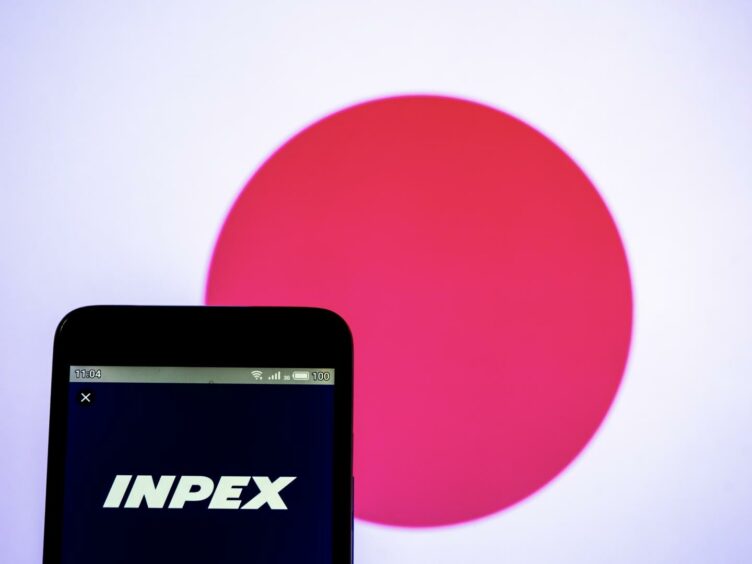
Inpex’s (TYO:1605) proposed Abadi liquefied natural gas (LNG) plant in the Masela Block offshore Indonesia, which has long struggled to gain traction, is looking increasingly unlikely to be developed, especially as another wave of US LNG projects looms large.
Numerous LNG export projects are under development or proposed in the US and they are extremely competitive given their low-cost and flexible shale gas supplies. Moreover, China the world’s biggest market for imported LNG, is expected to sign up for further US LNG deals, potentially triggering a third wave of LNG development. Japan’s JERA is also racing to secure new supplies from the US, underpinning new investment.
This new wave of LNG investment does not bode well for projects, such as the proposed 9.5 million tonnes per year (t/y) Abadi scheme, that already face numerous hurdles to commercialisation.
If in 2021-2023, final investment decisions (FIDs) for 69 million t/y of new LNG projects move forward as expected, then there will be enough new capacity to meet rising global demand out to the late 2020s, reckons investment research house Bernstein.
As a result, the marginal projects, such as Woodside’s Browse in Australia, and Abadi in Indonesia, may face significant delays or ultimately be cancelled, given these projects will continue to face significant constraints in the years to come, Bernstein said in a note this week.
Still, the Indonesian government appears to be in denial about the prospects for the development of Abadi, which has been labelled a project of national significance. Only last month, the head of upstream regulator SKK Migas, Dwi Soetjipto, told local media that Japanese energy company Inpex is expected to take a final investment decision (FID) by 2023. This seems like wishful thinking.
Inpex said in August that it does not plan to take a final investment decision until around 2024-2025, two years later than previous guidance of 2022-2023. This is the latest in a series of delays for Abadi. Inpex blamed the delay on the COVID pandemic, which has disrupted site survey work ahead of front-end engineering and design (FEED). Inpex also said the project may need to be redesigned to incorporate carbon capture and storage (CCS) or carbon capture utilisation and storage (CCUS).
The Abadi field is carbon dioxide (CO2) heavy. Adding CCS or CCUS will likely make the project even less commercially appealing. But the growing push towards decarbonisation, especially among Japanese companies, makes development of Abadi almost impossible without CCS.
Putting aside the CO2 issues, the proposed Abadi development remains commercially unattractive. The breakeven LNG price, based on delivery to Asia, is estimated at around $8 per million British thermal units (MMBtu).
In comparison, Qatari projects can breakeven at around $4/MMBtu based on delivery to Asia. After supplies from Qatar, US LNG ranks among the most competitive supply sources for Asia.
Significantly, Abadi remains a high-risk high-cost project and Inpex’s history as a developer is woeful. The Inpex-led Ichthys LNG project in Australia suffered multiple delays during construction and significant cost blowouts that saw the development cost jump from an expected $34 billion to over $45 billion.
Development of Abadi’s proposed 9.5 million t/y onshore liquefaction scheme will be technically challenging and is expected to cost around $18 billion to $20 billion. The project includes a large FPSO unit capable of handling 51 million cm per day of gas and up to 36,000 barrels per day of condensate, as well as a deep-water trunk pipeline from the Abadi field to proposed liquefaction facilities on Yamdena in the remote Tanimbar Islands.
Therefore, it should come as no surprise that project partner Shell (LSE:RDSA) has failed to generate any significant interest in the sales process for its share of the Abadi LNG project.
Shell’s 35% stake in the Masela Block offshore Indonesia is valued at $800 million to $1 billion, data from Rystad Energy shows. But, despite the block’s proximity to Asian demand markets, it is proving tough to find buyers for one of the world’s largest undeveloped gas resources. Japan’s Inpex operates the project with the remaining 65% share.
Indeed, it is hard to see Abadi starting production before 2030, if ever. A pragmatic solution would be to pipe the gas to LNG export facilities in nearby northern Australia, which would dramatically cut costs. But it is hard to see the Indonesian government agreeing to such a plan.
Meanwhile, the US and Qatar are busy ramping up LNG production capacity, which creates significant head winds for competing projects, such as Abadi, that remain marginal at best.
US LNG export capacity currently stands at 77 million t/y, which is comparable to Qatar and Australia, yet there is already another 30 million t/y of export capacity under development, noted investment Bank Macquarie earlier this month. US LNG projects being developed as part of a second wave include Golden Pass, Calcasieu Pass and Sabine Pass T6. Macquarie currently estimates potential final investment decisions (FIDs) for another 35 million t/y of capacity in a third wave, which includes Corpus Christi mid-scale T4-10 (9.5 million t/y), Plaquemine (10 million t/y), Driftwood (10 million t/y) and Freeport T4 (5.1 million t/y).
